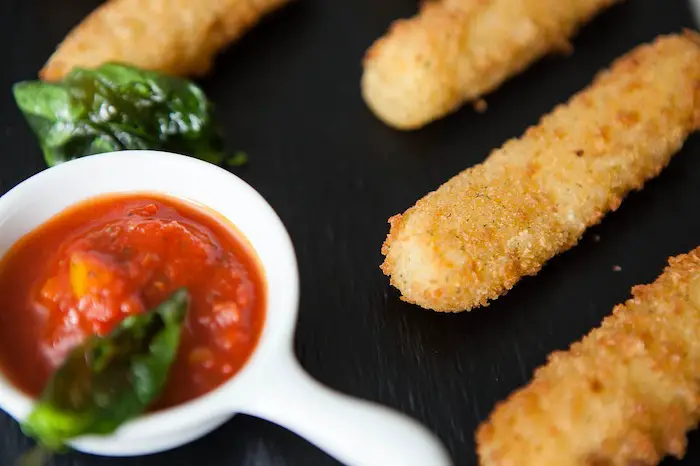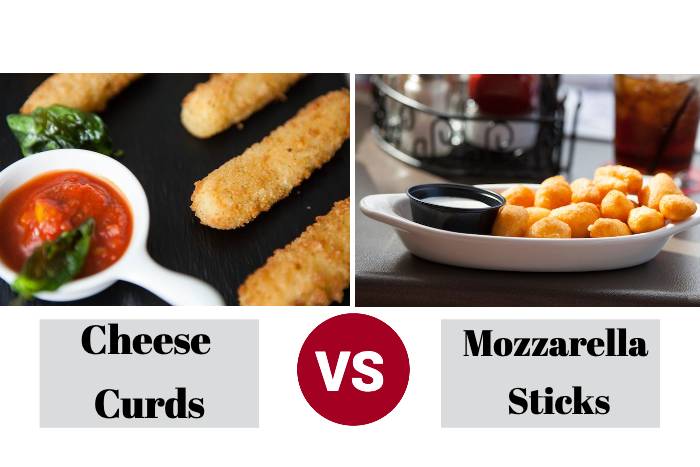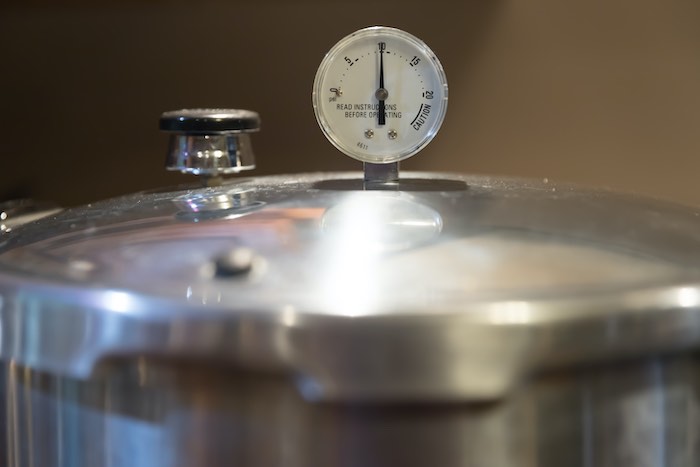For a heavenly experience with your food, the addition of cheese is always at the top of the list. It’s milky, delicious, scrumptious, and takes your mouth on a glorious journey no matter which form you find it in. This is particularly true when it comes to cheese curds and mozzarella sticks. While some people lump both of these together and say they’re basically the same, this isn’t entirely correct.
Aside from the fact that cheese curds and mozzarella sticks are both dairy products, they are completely different from one another. Mozzarella sticks are a delicious deep-fried or baked food with a coating of butter and seasoned breadcrumbs. While cheese curds can also come this way, they are also available “raw” or “plain,” without the familiar breading found on mozzarella sticks or the fried varieties of cheese curds.
Not knowing this information doesn’t present you with a life-or-death situation, but understanding the difference can make or break your meal if you plan on having one of these as an appetizer and are not sure which option is most suitable. For instance, if you wanted to make authentic food from India, you shouldn’t serve Italian-style mozzarella sticks. In this case, you will want cheese curds as your appetizer to keep the meal more natural and cohesive.
Cheese Curds

Cheese curds are the resulting moist pieces of fresh, pasteurized, curdled milk. These occur as a byproduct of creating cheese after adding rennet and bacterial cultures to clot the milk. When the cheese gets cut into cubes, the leftovers are a mix of curd and whey.
Manufacturers cook and press these pieces to extract the whey from the curd, and this results in cheese curds. These are most often made from cheddar cheese, but they can also be made from monterey jack, colby, Swiss, gruyere, gouda, and others.
Flavor & Taste
Cheese curds usually are mild yet salty in flavor with the same density as normal cheese, but they’re also usually a bit more spongy or rubbery. Any bona fide cheese head from Wisconsin or Minnesota will tell you that the fresher the cheese curds, the louder they squeak between your teeth as you bite into them.
Uses & Preparation
While fresh snacking is the most common way to enjoy cheese curds, deep-frying takes the number two spot. People roll these in butter then coat them in lightly seasoned breadcrumbs with subsequent frying or baking afterward.
Also, cheese curds on their own are the star of many dishes such as paneer, from India, and poutine, a French-Canadian dish incorporating french fries.
Mozzarella Sticks

Mozzarella sticks are a type of appetizer that only comes breaded and either deep-fried or baked. Mozzarella, on its own, is a specific type of semi-soft Italian cheese that traditionally derives from buffalo’s milk. However, goat, cow, and sheep milk can also be used when creating mozzarella cheese.
Mozzarella is not the byproduct of cheese production like cheese curds, but rather, it is the product of direct manufacturing. It’s usually white in color, but it can also be yellow depending on the diet of the animal from which the utilized milk comes.
Mozzarella as a Cheese
Traditional mozzarella can be very soft and doesn’t quite work for snacking on its own, but there are firmer types of this cheese (such as refrigerated string cheese sticks) available for this purpose for those who wish to have pure mozzarella anytime they please. The traditional form of this cheese is best in pasta dishes, on pizzas, or in salads (such as Caprese salads). It has a very subtle flavor and melts in your mouth upon contact. It’s not very salty, but it has a light and delightful texture.
Uses & Preparation of Mozzarella Sticks
Mozzarella sticks allow you to enjoy the oozy-gooey goodness that is the signature of hot mozzarella. You can use soft, traditional mozzarella or the American-style kind in the form of string cheese. Shredded varieties are also available, too. Similar to deep-frying cheese curds, sticks, or string cheese, simply roll these around in butter or oil and then in Italian-seasoned breadcrumbs.
The seasonings used for mozzarella sticks are often heavy with salt and pepper along with herbs such as basil, rosemary, oregano, parsley, and garlic, among others. Some people will even add parmesan cheese to the seasonings—you can never have too much cheese, right?
Understanding Cheese Curds vs. Mozzarella Sticks
The main takeaway here is that cheese curds tend to be more versatile than mozzarella sticks. This is because many cheese varieties can have cheese curds whereas mozzarella is the only cheese that comprises mozzarella sticks.
Mozzarella is Soft
Additionally, the nature of mozzarella is more fragile than cheese curds, making mozzarella sticks more difficult to prepare without cheese leaking out of the breading. Cheddar is definitely much firmer and is, therefore, easier to handle.
Cheese Curds are More Versatile
Although both are mouth-watering and delicious, mozzarella sticks are best on their own as an appetizer for Italian dishes or paired with many typical American dining options. Cheese curds have a host of uses and applications, ranging from general snacking purposes to deep-frying them as appetizers to being the star of a variety of dishes.
However, it’s also important to understand that cheese curds aren’t “cheese” in the same way as mozzarella. They are the byproduct of producing blocks of cheese after adding things like rennet and bacterial cultures to get cheese to clot. They have a very spongy texture whereas mozzarella is more gooey and stretchy by comparison.
See Also:
Cast Iron Vs. Regular Pans: What Are The Differences?
7 Uses For Leftover Turkey Brine
What To Do With 90% Cacao Dark Chocolate
Oligo Syrup Vs. Corn Syrup: How They Compare
Difference Between Jambalaya And Paella


